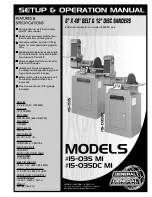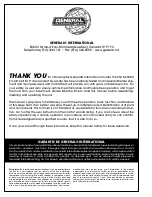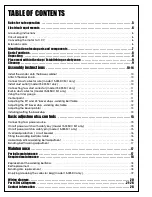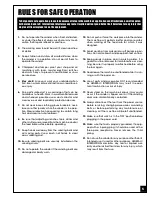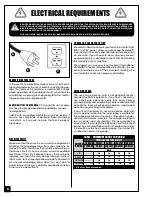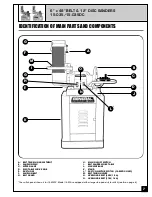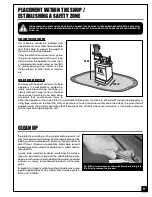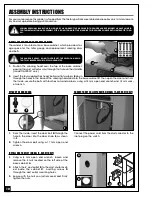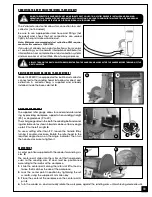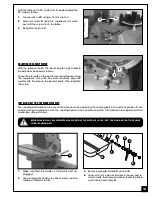
9
PLACEMENT WITHIN THE SHOP /
ESTABLISHING A SAFETY ZONE
PLACEMENT WITHIN THE SHOP
This machine should be installed and
operated only on a solid, flat and stable
floor that is able to support the weight of
the machine and the operator.
Using the dimensions shown as a guide-
line, plan for placement within your shop
that will allow the operator to work unen-
cumbered and unobstructed by foot traf-
fic (either passing shop visitors or other
shop workers) or other tools or machin-
ery.
ESTABLISHING A SAFETY ZONE
For shops with frequent visitors or multiple
operators, it is advisable to establish a
safety zone around shop machinery. A
clearly defined “no-go” zone on the floor
around each machine can help avoid
accidents that could cause injury to
either the operator or the shop visitor. It is advisable to take a few moments to either paint (using non-slip paint) or
using tape, define on the floor the limits or perimeter of each machines safety zone. Take steps to ensure that all
operators and shop visitors are aware that these areas are off limits whenever a machine is running for everyone
but the individual operating the unit.
SERIOUS PERSONAL INJURY COULD OCCUR IF YOU CONNECT THE MACHINE TO THE POWER SOURCE BEFORE YOU HAVE COM-
PLETED THE INSTALLATION AND ASSEMBLY STEPS. DO NOT CONNECT THE MACHINE TO THE POWER SOURCE UNTIL INSTRUCTED
TO DO SO.
22”
15 3/4”
54 1/8”
CLEAN UP
The protective coating on the sander table prevents rust
from forming during shipping and storage. Remove it by
rubbing with a rag dipped in kerosene, mineral spirits or
paint thinner. (Dispose of potentially flammable solvent-
soaked rags according to manufacturer’s safety recom-
mendations.)
A putty knife, held flat to avoid scratching the surface,
may also be used to scrape off the coating followed by
clean-up with solvent. Avoid rubbing the sander’s painted
surfaces, as many solvent-based products will remove
paint.
To prevent rust, apply a light coating of paste wax or use
regular applications of any after-market surface protec-
tant or rust inhibitor.
Tip: With a screw driver, push a solvent-saturated rag into
the T-slot to remove the grease.
Summary of Contents for 15-035 MI
Page 27: ...Notes 27...

